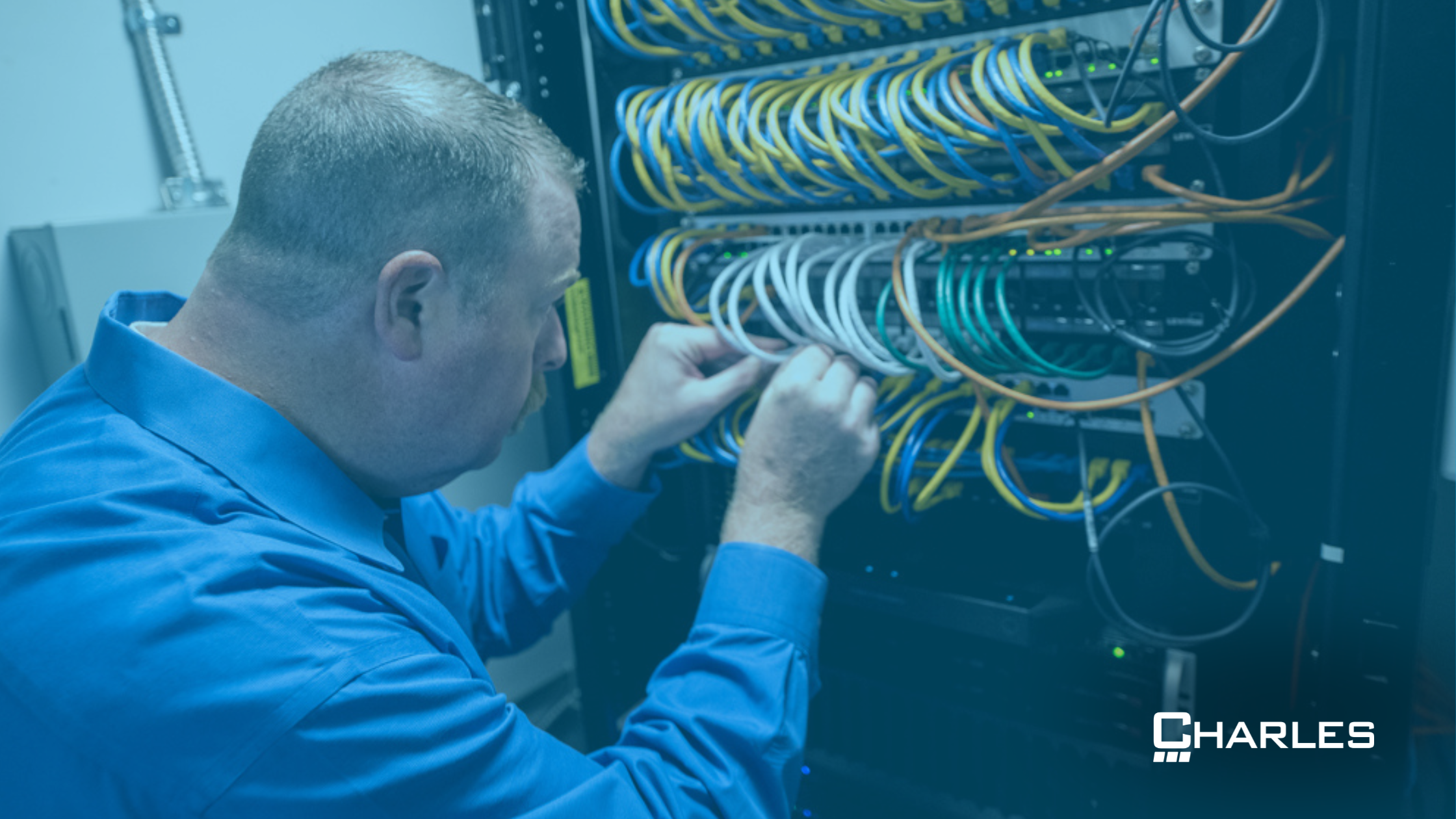
Navigating the landscape of internet connections for your SMB can be quite daunting. On one side, we have the well-established coax, also known as cable internet, which is both familiar and cost-effective. On the other side, we have the sleek newcomer, fiber, with its promise of lightning-fast speeds and unwavering reliability. Let's set aside any biases and delve into the advantages and disadvantages of each, so we can help you find the perfect solution for your business.
Your internet connection is no longer just a luxury – it is now a vital component of your business. For small and medium-sized businesses (SMBs), selecting the right internet service provider (ISP) and plan can make all the difference in staying ahead in today's competitive digital landscape. So, when it comes to choosing between fiber optic internet and traditional coaxial cable (COAX), let's dive into the advantages and disadvantages of each to help you make an informed decision that will drive your business's success.
Fiber Optic Internet
Imagine your data moving at near the speed of light! This is the remarkable capability of fiber optic internet. Its slender cables, which transmit light, provide exceptionally fast speeds, often reaching gigabit levels (Gbps) – envision downloading a large movie in mere seconds. However, the advantages of fiber extend beyond just raw speed. It offers symmetrical upload and download speeds, ensuring that data transmission is equally rapid. This is a crucial benefit for tasks such as utilizing cloud-based software, sharing files, and engaging in real-time collaboration. Consider the seamless experience of video conferencing, the effortless execution of e-commerce transactions, and the uninterrupted quality of VoIP calls – all of which are essential for fostering a productive and connected workforce.
While the initial cost of fiber may appear intimidating, it is actually a smart investment for long-term efficiency and scalability. Fiber offers superior reliability with fewer outages and minimal bandwidth fluctuations, ensuring that your business operates smoothly without any downtime or frustration. Additionally, as your data needs expand, fiber easily adapts to accommodate them, unlike the limitations of COAX.
Coaxial Cable Internet
Despite being a seasoned veteran in the internet world, coax internet remains a viable option for many SMBs. Its copper cables may not be as fast as fiber, but they do offer decent speeds that are suitable for basic online tasks such as email, web browsing, and even some social media management. Additionally, the widespread infrastructure of coax makes it more readily available than fiber, especially in remote areas.
However, it's important to note that COAX may not provide the same level of speed as fiber. Its upload and download speeds are asymmetrical, which can create limitations for data-intensive tasks such as uploading large files or video conferencing. Additionally, businesses with high internet usage may need to be mindful of data caps.
Choosing Your Right Option
In order to assist you in making a well-informed decision, let us now compare the main contenders in a direct face-off:
| Feature | Fiber Optic | Coaxial Cable |
| Speed | Up to 1 Gbps+ | Up to 200 Mbps |
| Latency | Very low | Moderate |
| Reliability | Excellent | Good |
| Cost | More expensive | Less expensive |
| Availability | Expanding, but not yet ubiquitous | Widespread |
| Ideal for | Data-intensive activities, cloud, video conferencing, collaboration | Basic online tasks, budget-conscious businesses |
Ultimately, the right option will depend on your businesses specific needs. Consider factors like:
- Business needs: What are your daily online activities? Do you need to transfer large files, collaborate in real-time, or handle heavy cloud workloads?
- Budget: How much can you afford to invest in your internet connection?
- Data usage: How much data do you typically use in a month?
- Future growth: Anticipate your future data needs and choose an internet solution that can scale with your business.
Tools and Tips
After you have made your selection, it's important not to simply settle and consider the task done. Here are some valuable tips to maximize the benefits of your internet service:
- Shop around: Compare plans and pricing from different ISPs before making a decision.
- Understand your contract: Read the fine print to avoid hidden fees or data caps.
- Optimize your network: Invest in quality routers and access points to ensure strong Wi-Fi coverage throughout your office.
- Prioritize security: Implement strong security awareness training so that everyone on your network knows the risks and security red flags to watch out for.
Remember, your internet connection is a crucial asset for your business. Choosing the right one will empower your team, streamline your operations, and provide the necessary tools for success in the digital age. So, whether you opt for the lightning-fast speeds of fiber or the reliable familiarity of COAX, ensure that your chosen bandwidth solution enhances your success rather than causing frustration.
Future of Internet
As the internet landscape continues to evolve, it's important to stay informed about emerging technologies like wireless mesh networks and satellite internet. These options provide even wider coverage and greater flexibility for remote businesses. Additionally, cybersecurity remains a critical concern, so it is essential to stay updated on evolving threats and invest in robust security solutions to safeguard your valuable data.
By staying well-informed, flexible, and equipped with the necessary tools, your SMB can overcome any bandwidth challenge and establish its rightful presence in the digital arena. If you need assistance in choosing an internet service provider, Charles IT can help! We can guide you in the right direction of what may work best for your business and keep your network secure, ensuring you can focus on the success of your business.

.png)


